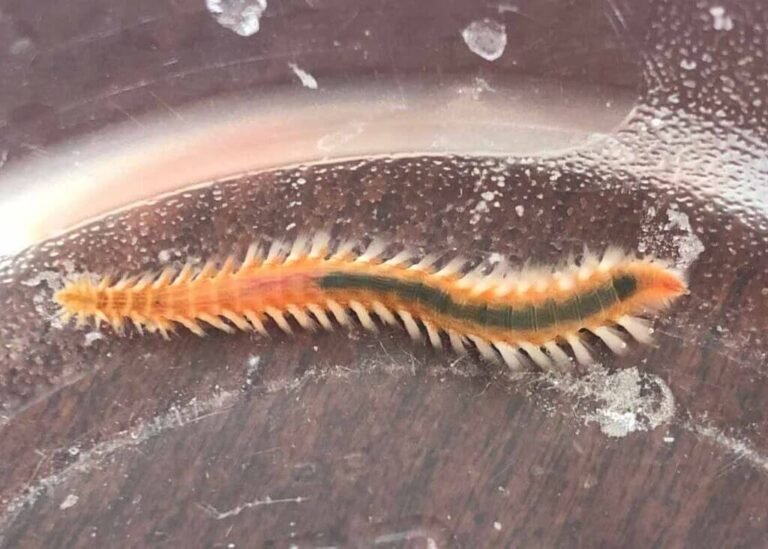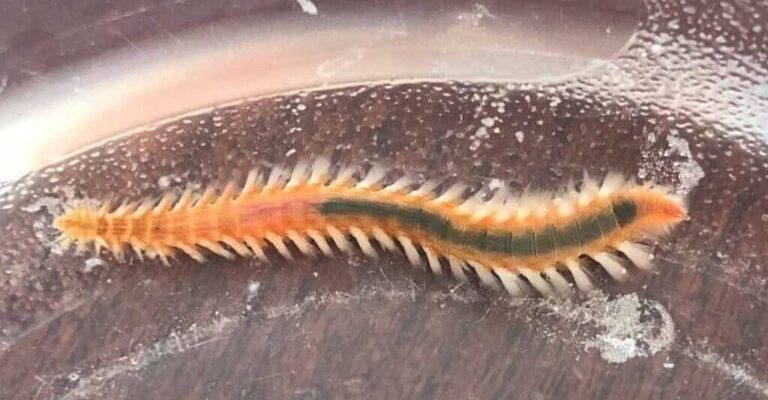
Bristle worms belong to the class Polychaeta, which is part of a larger group called annelids. You might find them in various marine environments, from coral reefs to the deep sea. These worms play a significant role in their ecosystems, helping with nutrient cycling and the breakdown of organic material. Their regenerative capabilities are not just interesting from a biological perspective but also give us insights into evolutionary adaptations. So, grab a cup of coffee, and let’s explore this amazing topic further!
What Are Bristle Worms?
Bristle worms are segmented worms known for their bristle-like structures called chaetae. These tiny bristles help them move through the water and even burrow into sediment. They come in various sizes, from a few millimeters to over a meter long, and can be found in many colors, including red, brown, and green. Their vibrant hues can be quite eye-catching and are often a characteristic feature of marine biodiversity.
You might also be surprised to learn that bristle worms aren’t just one species but encompass thousands of different species! Some are free-swimming, while others prefer a more sedentary lifestyle, often making homes in tubes or burrows. This diversity allows them to thrive in various habitats, from the shallow waters of the ocean to the deep-sea floors.
One thing that sets bristle worms apart is their robust anatomy. They have a well-developed nervous system and can even sense changes in their environment. But what makes them truly extraordinary is their ability to regenerate. It’s this regenerative capacity that we’re going to explore in-depth!
Understanding Regeneration
Regeneration is the process through which organisms can regrow lost body parts. In some animals, like starfish and salamanders, this ability is widely recognized and fascinating to study. Bristle worms, too, have this remarkable talent. They can regenerate segments of their bodies, which can include vital organs and even parts of their nervous systems. But how does this process work?
When bristle worms are cut, the cells at the injury site begin to multiply rapidly. This cellular activity leads to the formation of a structure known as a blastema, which is a mass of cells capable of growth and regeneration. Over time, the blastema differentiates into specialized tissues, restoring the worm’s lost segments. It’s a complex biological process, but you can think of it like nature’s own version of a construction crew rapidly rebuilding a damaged building.
Interestingly, the extent of regeneration can depend on various factors, including the species of the bristle worm and the conditions in which it lives. For example, some species may have more robust regenerative abilities than others, allowing them to regrow larger parts of their bodies or heal more quickly.
How Do Bristle Worms Regenerate?
The regeneration process for bristle worms involves several steps, and it can be quite intricate. First, let’s break down how regeneration happens:
- Injury Response: When a bristle worm is cut, its body responds to the injury by initiating a healing process. This starts with the formation of a protective layer over the wound.
- Cell Proliferation: Once the wound is covered, specialized cells called neoblasts begin to divide and multiply. These cells are crucial for regeneration as they can differentiate into various types of tissues.
- Blastema Formation: As these cells multiply, they form a mass known as a blastema, which is essential for rebuilding the lost segment. This structure serves as the starting point for new tissue formation.
- Differentiation: The cells in the blastema then differentiate into muscle, nerve, and other tissue types to recreate the missing parts of the worm’s body.
It’s genuinely amazing to think about how nature equips these creatures with such advanced healing capabilities. But why is regeneration so vital for them? For bristle worms, the ability to regenerate can be a matter of survival. Being cut or injured can happen due to predation, environmental stress, or even accidents. Regrowing lost segments enables them to continue their essential roles in the ecosystem and maintain their health.
Why Regeneration Matters in Nature
Regeneration isn’t just fascinating; it’s essential for understanding how different organisms adapt and thrive in their environments. For bristle worms, the ability to regenerate provides several benefits:
1. Survival: Regeneration helps bristle worms recover from injuries that could otherwise be fatal. This capability allows them to avoid predation by growing back lost segments and escaping threats.
2. Ecosystem Function: As primary decomposers, bristle worms play a significant role in breaking down organic material. Their ability to regenerate ensures they remain part of the food web, maintaining the balance of marine ecosystems.
3. Research Opportunities: Studying how bristle worms regenerate can provide insights into cellular biology and potential applications in medicine. By understanding their mechanisms, researchers can explore new healing methods for humans.
Understanding the importance of regeneration in these organisms helps us appreciate the broader implications of biological adaptation. It also inspires ongoing research into regenerative medicine, a field that could revolutionize healing in humans.
Comparing Regeneration in Bristle Worms and Other Animals
While bristle worms have impressive regenerative capabilities, they’re not alone in this fascinating ability. Other species, like salamanders and planarians, also showcase remarkable regeneration. But how do they compare?
– Bristle Worms vs. Salamanders: Salamanders can regenerate limbs, tails, and even parts of their hearts and eyes. Their regeneration involves similar processes of cell proliferation and differentiation, but salamanders can regrow complex structures in a more organized manner.
– Bristle Worms vs. Planarians: Planarians are flatworms known for their extraordinary regenerative abilities. They can regenerate their whole bodies from small fragments, which is more extensive than what most bristle worms can achieve. Planarians also rely on a high concentration of stem cells, making them a popular model for regeneration studies.
Both bristle worms and these other animals illustrate the diverse strategies nature employs for survival and adaptation. It’s a classic case of “different strokes for different folks,” where each species has developed unique methods to cope with challenges.
Practical Implications of Studying Regeneration
Studying the regeneration abilities of bristle worms has more than just scientific curiosity at stake. There are several practical implications we can draw from their extraordinary healing skills:
1. Medical Advances: Researchers are eager to tap into the regenerative processes of bristle worms and other organisms to develop new medical treatments. Understanding how these creatures heal could lead to breakthroughs in tissue engineering and regenerative medicine.
2. Environmental Health: The health of bristle worm populations can indicate the overall health of marine ecosystems. Monitoring their regenerative abilities can help scientists assess the impact of pollution, habitat loss, and climate change on marine life.
3. Bioengineering Innovations: Insights from bristle worms and their regenerative processes can inspire innovations in biomimicry. Researchers can develop materials and technology that mimic natural regeneration, offering solutions to various engineering problems.
As we learn more about how bristle worms and other species regenerate, we’re not just uncovering biological mechanisms. We’re also exploring paths to improve human health and environmental sustainability.
In summary, bristle worms showcase a remarkable ability to regenerate when cut. From their intricate healing processes to their vital role in marine ecosystems, these fascinating creatures deserve our attention and admiration. The study of their regeneration capabilities not only reveals the wonders of nature but also holds potential for practical applications in medicine and environmental science.
So the next time you wonder about the resilience of life in the depths of the ocean, think about bristle worms and their incredible transformative powers. To us, they might just be simple, colorful worms, but to them, regeneration is a way of life—a testament to the beauty and complexity of nature.

